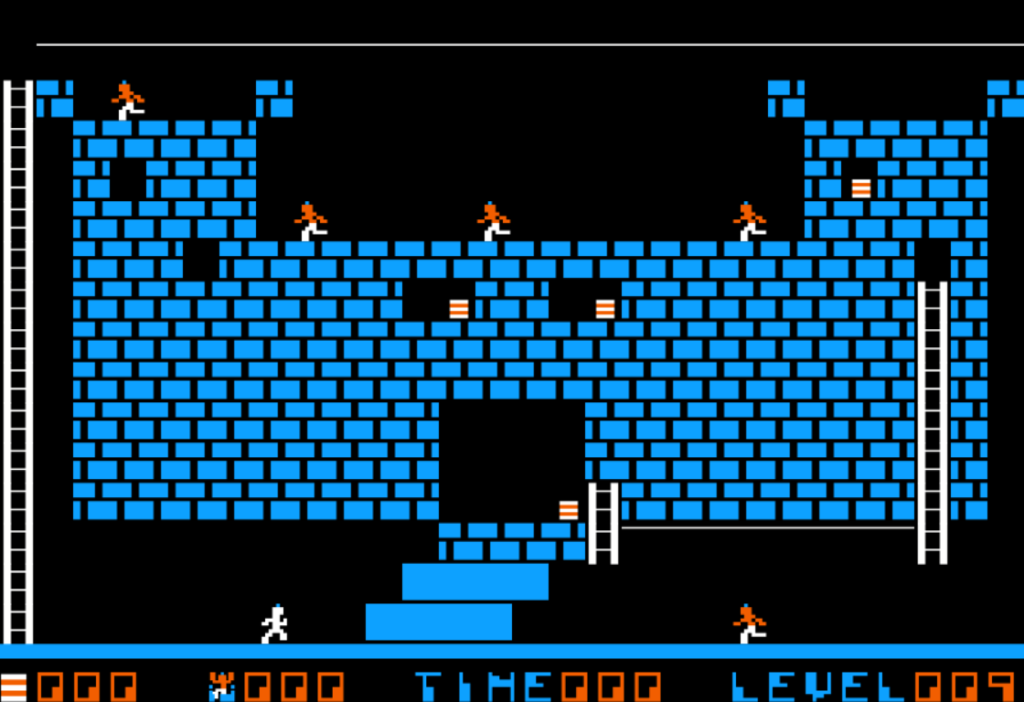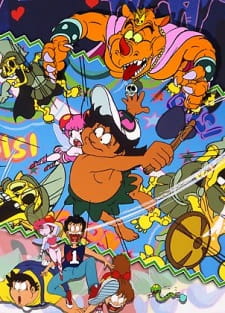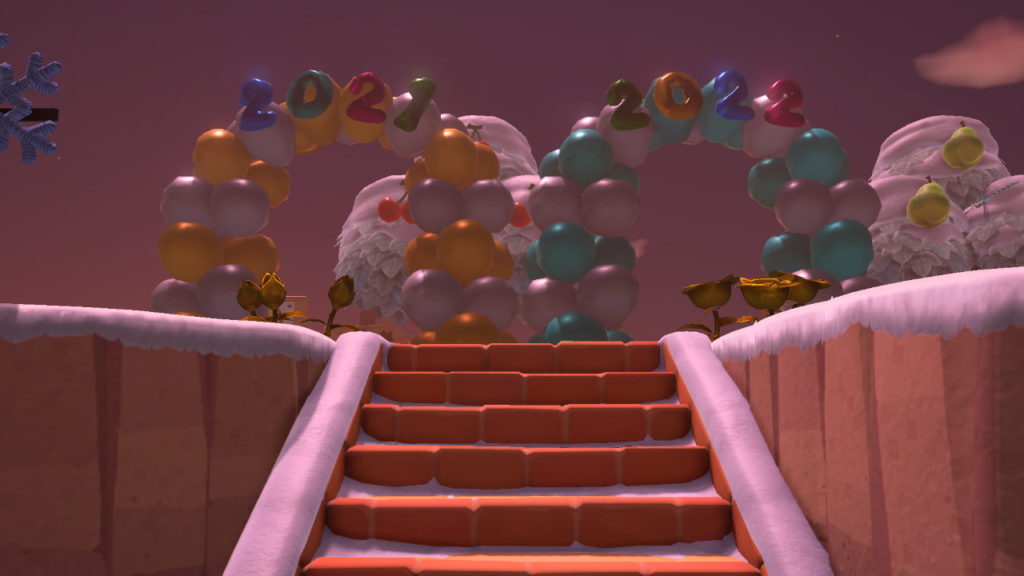
This one is going back to my Metafilter posting history. In case you’re unfamiliar with Lode Runner, I really have to give a short history and primer.
Lode Runner was a game released in 1983 for the Apple II home computer, although ports for several other machines were soon developed and released. Created by the late Douglas E. Smith, it asked players to maneuver through 150 levels of caverns and structures, collecting all the gold (little boxes) on each level then ascending to the top of the screen.

150 levels sounds like a lot, and it really was, but amazingly the game keeps finding new ways to surprise with its small number of level parts and their implications. When player were done with those (or even if they weren’t), Lode Runner included a level editor that player could use to make their own levels.
The ostensible subject of this post is a web recreation of Lode Runner that includes hundreds of levels to play and learn and enjoy. But the site largely speaks for itself in that regard, I think, so here’s some musing on Lode Runner itself, and its history.
So, here is the link. If you’ve never played it before, it’s simple to get into, but very interesting to puzzle over. Every level can be completed, even if many of them seem like they can’t possibly be. Good luck!
Design
Each Lode Runner level is composed of only a small number of parts. There’s the player and the guards that pursue them, of course. There’s normal, “diggable” blocks, solid “undiggable” ground, ladders, overhead bars, trap doors that look like diggable blocks but cause the player to fall through them, gold boxes, and hidden ladders that only appear when the last gold box has been collected.
Diggable blocks, the ones that look like bricks, can be drilled into, leaving a hole, but only when standing next to them and they have nothing above them. That means absolutely nothing: a quirk of the game is that even a set of overhead bars or an invisible ladder in the space above a block will prevent it from being dug.
The obvious use for these holes is to trap guards. When one falls into a hole, it’s stuck for a few seconds until it can climb out. Holes close back up after a short while, and a guard in a hole when it closes up around it are killed, usually to respawn randomly near the top of the screen.
The inobvious use is to penetrate into the very walls of a level to collect gold that would otherwise be inaccessible. By digging out a whole layer of bricks, the player can jump into the excavated space and continue digging the next level down.
The other thing about Lode Runner is the AI of the guards. They’re run by a simple program, and are easy to manipulate, but they still have a way of keeping the player guessing when they function as obstacles. When used as tools though, learning how to manipulate them becomes essential. The player can stand on their heads, and because they fall faster than the guards, can even use them as momentary platforms during a fall, to quickly step to one side on the way down.
I don’t mean to dive too deeply into the pieces, their workings and their quirks. A lot of the fun of Lode Runner comes from discovering them for yourself, and being introduced, step by step through the game’s levels, to their implications.
Culture
Back in high school we had an Apple IIc in the back room that we could play with on breaks. I’m not sure what it was there for, I don’t think any educational software was ever run on it, but the copy of Lode Runner on it (already a few years old by that point) was put into heavy rotation, and students would bring their own disks to school to save levels on.
This is an aside, but it demands to be told: one such student saved a number of levels they had labored over to a disk and left it in the room one day. A friend of his, who had thought that student had erased his disk or saved over his own levels, physically cut their disk up with scissors and left it on their desk! It was all in error, but the two’s friendship was never the same after that. The moral: do not be quick to vengeance, theatricality gratifies only one’s self, and in any case, be sure of the facts first. More times in my life I’ve seen someone take drastic steps in error than in rightness. So, back to Lode Runner!
A number of classic Western computer games got a second life, sometimes one that far outstripped their beginnings, when they got ported to Japanese computers and game consoles. Lode Runner was first ported to an arcade cabinet by Irem, then converted to the Famicom by Hudson Soft, where as a prominent early title for that system it went on to sell over a million units, and became a part of Japanese popular culture. From there it reached a number of other systems, including a version for the PC Engine, called Battle Lode Runner, that much later would make it back to the US as an early Wii Virtual Console release. A few other game series that would become cultural fixtures in Japan, adding hundreds of thousands of sales beyond that of their U.S. editions, were Spelunker, Wizardry and Ultima.

At the time Hudson Soft licensed an adaptation of their Adventure Island game, itself deserving of a long post, as an anime production, called Bug tte Honey, which I’m still not sure how to pronounce. It was a Captain N-style setting, where video game players were transported into the game world to have various adventures. It was used as a showcase for several Hudson properties, including Lode Runner.
Lode Runner is a timeless classic, something that we didn’t realize how good it was when we had it. I mean, we knew it was good, but we didn’t yet know how difficult it was to create something so elegant.
For a history of Lode Runner, publisher Tozai Games has a short retrospective and timeline that still survives on the web.





